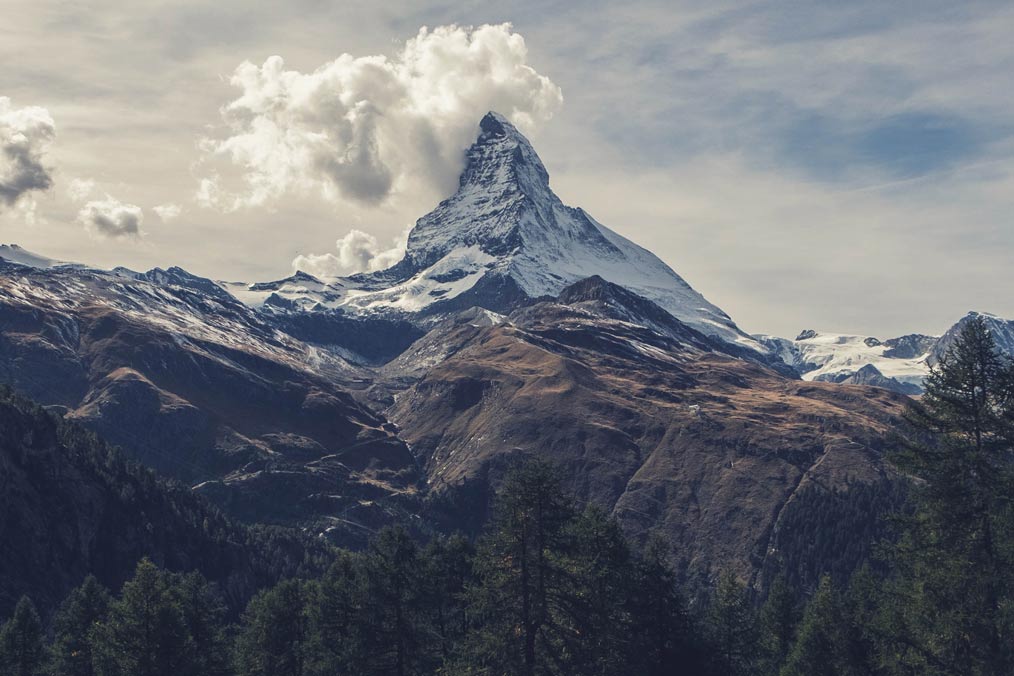History
Aegidius Tschudi, one of the earliest Alpine topographers and historians, was the first to mention the region around the Matterhorn in his work, De Prisca ac Vera Alpina Raethi, published in Basel in 1538. He approached the Matterhorn as a student when in his Alpine travels he reached the summit of the Theodul Pass but he does not seem to have paid any particular attention to the mountain itself.
The Matterhorn remained unstudied for more than two centuries, until a geologist from Geneva, Horace Benedict de Saussure, travelled to the mountain, which filled him with admiration. However, de Saussure was not moved to climb the mountain, and had no hope of measuring its altitude by taking a barometer to its summit. "Its precipitous sides," he wrote, "which give no hold to the very snows, are such as to afford no means of access." Yet his scientific interest was kindled by "the proud peak which rises to so vast an altitude, like a triangular obelisk, that seems to be carved by a chisel." His mind intuitively grasped the causes which gave the peak its present precipitous form: the Matterhorn was not like a perfected crystal; the centuries had laboured to destroy a great part of an ancient and much larger mountain.
On his first journey de Saussure had come from Ayas to the Col des Cimes Blanches, from where the Matterhorn first comes into view; descending to Breuil, he ascended to the Theodul Pass. On his second journey, in 1792, he came to the Valtournanche, studying and describing it; he ascended to the Theodul Pass, where he spent three days, analysing the structure of the Matterhorn, whose height he was the first to measure, and collecting stones, plants and insects. He made careful observations, from the sparse lichen that clung to the rocks to the tiny but vigorous glacier fly that fluttered over the snows and whose existence at such heights was mysterious. At night he took refuge under the tent erected near the ruins of an old fort at the top of the pass. During these days he climbed the Klein Matterhorn (3,883 metres), which he named the Cime Brune du Breithorn.


